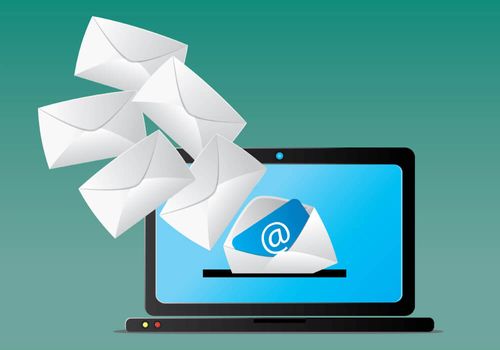In today's digital age, email communication plays a critical role in personal and business interactions. However, not all emails reach their intended recipients. Sometimes, emails "bounce" back, leaving senders puzzled about the reasons behind it. Understanding the concept of email bounces and distinguishing between hard bounces and soft bounces is crucial for optimizing your email deliverability. In this comprehensive guide, we will delve into the topic of email bounces, explore the differences between hard and soft bounces, discuss common causes, and provide effective strategies to prevent bounces and enhance your email marketing success.
Unraveling the Mystery of Email Bounces

When an email bounces, it means that the message was not successfully delivered to the recipient's inbox and was returned to the sender. Email bounces occur for various reasons, including technical issues, recipient email server restrictions, or invalid email addresses. To shed light on this topic, let's understand the two primary types of email bounces: hard bounces and soft bounces.
Hard Bounces: Permanent Delivery Failures
Hard bounces are permanent delivery failures, indicating that an email cannot be delivered to the recipient's mailbox. Common reasons for hard bounces include:
- Invalid or Nonexistent Email Addresses: When an email is sent to an invalid or nonexistent email address, it will result in a hard bounce. This can occur due to typos, outdated email addresses, or intentional misspellings. It is essential to verify email addresses and ensure their accuracy to minimize hard bounces.
- Domain or Email Server Issues: If the recipient's domain or email server experiences technical problems or has ceased to exist, the email will bounce as a hard bounce. In such cases, reaching out to the recipient through alternative means or updating their contact information is necessary.
- Blocked by the Recipient's Server: Some email servers employ strict filtering mechanisms or spam detection algorithms that may block certain emails. If your email is flagged as spam or violates the recipient's server policies, it may result in a hard bounce.
Soft Bounces: Temporary Delivery Issues
Soft bounces are temporary delivery failures, indicating that an email could not be delivered to the recipient's mailbox at a specific time. Common causes of soft bounces include:
- Mailbox Full: If the recipient's mailbox has reached its storage limit, further incoming emails may bounce back as soft bounces. The recipient needs to free up space in their mailbox to receive new emails.
- Temporary Server Issues: When the recipient's email server experiences temporary technical issues, such as being down for maintenance or overloaded, emails may bounce back as soft bounces. In such cases, the email delivery can be retried later, and it may be successfully delivered.
- Content Filtering and Spam Detection: Emails containing certain keywords, suspicious attachments, or triggering spam filters may bounce back as soft bounces. Adhering to email best practices and avoiding spam-like content can minimize the occurrence of soft bounces caused by content filtering.
Strategies to Prevent Email Bounces and Improve Deliverability

Preventing email bounces and optimizing deliverability is crucial for the success of your email marketing campaigns. Here are some effective strategies to prevent email bounces:
- Maintain a Clean and Updated Email List: Regularly clean and update your email list to remove invalid and inactive email addresses. Use email validation tools or services to verify the validity of email addresses before sending out campaigns.
- Implement Double Opt-In: Utilize a double opt-in process where subscribers confirm their email addresses after signing up. This helps ensure that the email addresses in your list are valid and reduces the chances of hard bounces caused by typos or intentional invalid submissions.
- Monitor Bounce Rates: Keep a close eye on your email bounce rates. High bounce rates can indicate underlying issues with your email list quality or content. Regularly analyze bounce reports and take necessary actions to rectify the causes of bounces.
- Segment Your Email List: Segmenting your email list based on user preferences, engagement levels, or demographics allows you to send targeted and relevant content. By delivering personalized emails to engaged recipients, you can reduce the likelihood of soft bounces caused by disinterest or unengaging content.
- Follow Email Best Practices: Adhere to best practices for email content, including avoiding excessive use of spam trigger words, maintaining a healthy text-to-image ratio, and providing clear unsubscribe options. By following these guidelines, you can minimize the chances of triggering spam filters and reduce the occurrence of soft bounces.
Frequently Asked Questions (FAQs)
Q1: What are the main differences between hard bounces and soft bounces?
Hard bounces are permanent delivery failures, typically caused by invalid email addresses or recipient server issues. Soft bounces, on the other hand, are temporary delivery failures due to reasons like full mailboxes or temporary server issues.
Q2: How can I reduce email bounces?
To reduce email bounces, ensure that you maintain a clean email list by regularly updating and validating email addresses. Implement a double opt-in process, monitor bounce rates, segment your email list, and follow email best practices.
Q3: What should I do when an email bounces?
When an email bounces, review the bounce report to determine the reason for the bounce. For hard bounces caused by invalid email addresses, remove them from your list. For soft bounces, monitor the situation and consider re-sending the email later.
Conclusion
Understanding email bounces is crucial for maintaining optimal email deliverability and successful communication. By differentiating between hard bounces and soft bounces, identifying their causes, and implementing best practices to handle them effectively, you can improve your email deliverability rates and ensure your messages reach the intended recipients. By following the guidelines outlined in this comprehensive guide, you can navigate the intricacies of email bounces and optimize your email communication for maximum impact.



